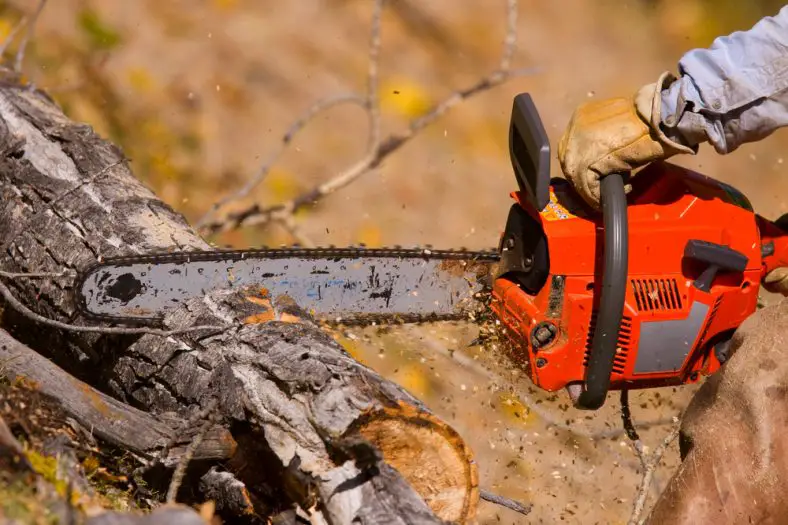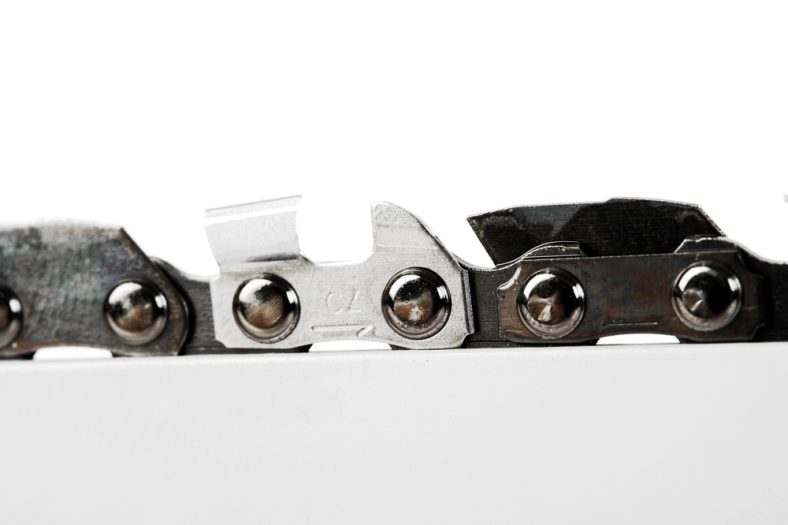Finding the answer to the question, “Which Stihl chainsaw is the best for me?” is a journey that requires careful thought and evaluation. The Stihl brand stands tall in the market for its consistent delivery of high-quality, resilient, and multipurpose chainsaws.
Given the vast range of options, the selection process might seem daunting, but this comprehensive guide will steer you toward the ideal Stihl chainsaw that aligns with your needs and preferences.
Recognizing Your Chainsaw Usage Needs – Which Stihl Chainsaw is Best For Me?
Identifying Your Chainsaw Requirements: Home Use Vs. Professional Applications
The first step toward answering “Which Stihl chainsaw is best for me?” lies in identifying your specific requirements. The frequency and type of usage determine the kind of chainsaw that best suits your needs, whether you’re a homeowner engaging in occasional DIY projects or a professional lumberjack managing significant forestry tasks.

For example, if you’re a farmer handling vast land and regularly felling trees and chopping firewood, your needs may warrant more than one chainsaw with varying capacities. Conversely, if your use is limited to periodic pruning and trimming tasks in your backyard, a compact, lightweight model will suffice.
Comparison Table of Different Stihl Chainsaw Models
| Model | Engine Power (KW) | Recommended Guide Bar Length (inch/cm) | Weight (kg) | Ideal For |
|---|---|---|---|---|
| MS-170 | 1.2 KW | 12″-16″/30-40cm | 4.1 kg | Light garden work, pruning, trimming |
| MS-180 | 1.4 KW | 12″-16″/30-40cm | 4.2 kg | Small to medium tree cutting, firewood preparation |
| MS-261 | 3.0 KW | 16″-20″/40-50cm | 4.9 kg | Medium to large tree cutting, firewood cutting |
| MS-661 | 5.4 KW | 20″-28″/50-70cm | 7.4 kg | Large tree cutting, professional forestry work |
Key Specifications in Stihl Chainsaw Selection
Significance of Power, Bar Length, and Weight
To make an informed Stihl chainsaw choice, it’s crucial to understand key chainsaw specifications, such as:
- power
- bar length
- weight
Chainsaws with high power and longer guide bars are designed for larger, more intensive tasks, while smaller, lightweight models are well-suited for small to medium tasks and tend to be easier to handle and maneuver.
Stihl’s Advanced Chainsaw Technologies Across Models
Stihl’s reputation in the chainsaw market extends beyond powerful engines and exceptional cutting capacity. The company’s commitment to revolutionizing chainsaw technology is evident in the range of advanced features they’ve incorporated into various models. Here’s a closer look at the distinct technologies available and the models that feature them:
ErgoStart (E):
The ErgoStart system, often indicated with an ‘E’ in the model name, is designed to make starting Stihl chainsaws practically effortless. This technology reduces the strain on the user’s body and ensures smooth, jerk-free startups.
Some Stihl chainsaw models equipped with the ErgoStart system include:
- MS 180 C-BE – This model is a homeowner favorite, offering ErgoStart alongside its 1.4 KW power engine and 16″ guide bar, perfect for cutting firewood and handling light to medium tree cutting tasks.
- MS 251 C-BE – This model is an excellent choice for heavier homeowner use or light professional use, boasting a 2.2 KW engine power, a guide bar length recommendation of 16″-18″, and the ErgoStart system for easy handling.
- MS 362 C-M – A professional-class chainsaw with M-Tronic engine management and ErgoStart. This model has a 3.5 KW engine power and can handle a guide bar length of up to 25″.
Quick Chain Tensioning (B):
Quick Chain Tensioning, often indicated with a ‘B’ in the model name, is an innovative feature that enables quick and easy tensioning of the chainsaw’s chain. This feature eliminates the need for tools when adjusting the chain tension, thereby enhancing convenience and user safety.
Chainsaws equipped with Quick Chain Tensioning include:
- MS 171 C-BE – This model is suitable for lighter tasks around the house, like pruning and trimming. It’s equipped with a 1.3 KW engine and is recommended for a 14″-16″ guide bar length.
- MS 211 C-BE – This mid-range model comes with a 2.3 KW engine and a recommended guide bar length of 16″-18″. It’s a practical choice for homeowners needing a bit more power for medium tree cutting or firewood preparation.
- MS 250 C-BE – This powerful chainsaw comes with a 2.3 KW engine, ideal for tasks that require a bit more grunt, such as larger tree felling and firewood cutting. It can accommodate a guide bar length of up to 18″.
It’s worth noting that many Stihl chainsaw models often feature both technologies, as indicated by ‘C-BE’ in the model name. This combination of advanced features enhances user experience by offering an easy-to-start and simple-to-maintain chainsaw.
Making Your Stihl Chainsaw Choice
Optimal Recommendations for Varied User Needs
The best Stihl chainsaw for you hinges largely on your specific requirements and expectations. If you prioritize ease of use and mobility without the concerns of fuel storage, a battery-powered Stihl chainsaw would be an excellent choice. However, if you need to undertake demanding tasks that necessitate continuous power, a petrol-driven chainsaw would be more appropriate.
Caring for Your Stihl Chainsaw
Essential Chainsaw Maintenance Practices
Investing in a Stihl chainsaw is only the first step in ensuring seamless, efficient work. The durability and long-term performance of your tool heavily depend on how you take care of it. Even the finest chainsaw needs regular upkeep to maintain its functionality.
Regular Inspection and Cleaning
The first and foremost step to keeping your Stihl chainsaw in tip-top condition is regular inspection and cleaning. Ensure that there’s no dust, dirt, or debris lodged in the chainsaw components, as this can result in reduced performance and premature wear. Make it a routine to clean your chainsaw after every use. Remember to disconnect the chainsaw from its power source before starting any cleaning process to avoid accidental startup.
Chain Sharpening
A chainsaw is only as good as its cutting edge, making chain sharpening a critical aspect of chainsaw maintenance. Dull chains not only make your work harder but also put unnecessary strain on the chainsaw engine, leading to faster wear and tear. It’s advisable to sharpen the chains regularly, based on the frequency of use and the type of material you’re cutting. Stihl offers a range of filing tools and guides to help you maintain the sharpness of your chainsaw blades.
Guide Bar Oiling
The guide bar on your chainsaw needs regular oiling to reduce friction between the chain and the bar, allowing smoother operation. Stihl chainsaws are equipped with automatic oiling systems, but it’s essential to check and refill the oil reservoir as needed. Use high-quality bar and chain oil for optimum performance and longevity.
Air Filter Maintenance
Your chainsaw’s air filter plays a critical role in keeping the engine clean by preventing dust, dirt, and other particles from entering it. A dirty or clogged air filter can lead to poor engine performance and increased fuel consumption. Stihl chainsaws feature easily accessible air filters, making cleaning or replacement a straightforward process. Regularly inspect and clean the air filter, especially if you’re working in dusty environments.
Fuel and Oil Mixture
If you’re using a gasoline-powered Stihl chainsaw, it’s crucial to use the correct fuel-to-oil ratio as recommended by Stihl. An incorrect mixture can lead to engine damage or inefficient operation. Always use fresh fuel and high-quality two-stroke engine oil.
Regular Servicing
In addition to these user-maintainable aspects, your Stihl chainsaw will benefit from regular professional servicing. Stihl dealers and service centres are equipped to perform detailed inspections, replace worn parts, and conduct fine-tuned adjustments to ensure your chainsaw continues to perform at its peak.
Overall, maintaining your Stihl chainsaw involves a combination of daily checks, periodic user maintenance, and professional servicing. Proper care and attention not only extend your chainsaw’s lifespan but also ensure safer operation and superior performance.
Final Thoughts
In conclusion, the diversity of Stihl chainsaw models offers something for everyone, from casual backyard gardeners to professional foresters. Recognizing your chainsaw needs and understanding the different chainsaw specifications will empower you to select the ideal Stihl chainsaw model. Hopefully we have helped you today to work out which Stihl chainsaw is best for me?


